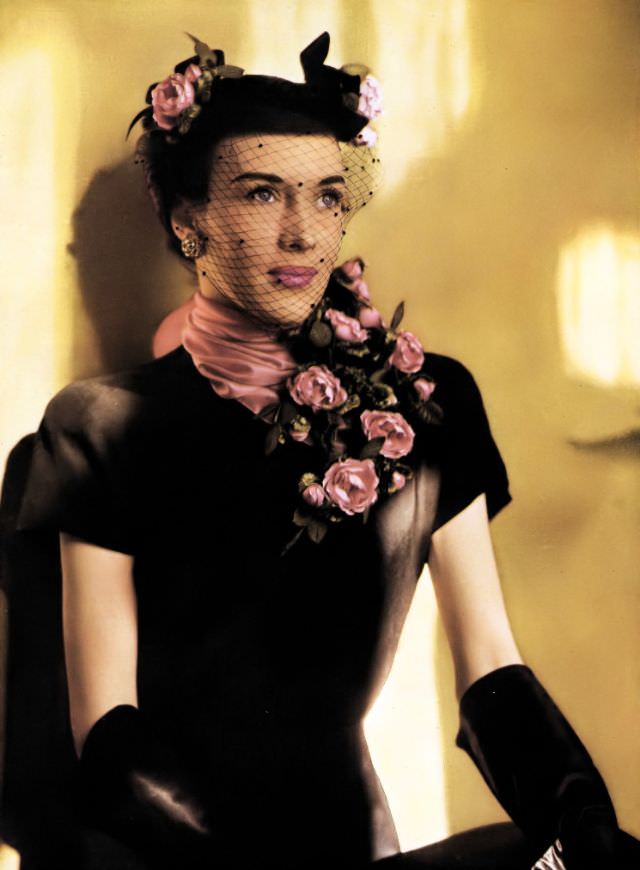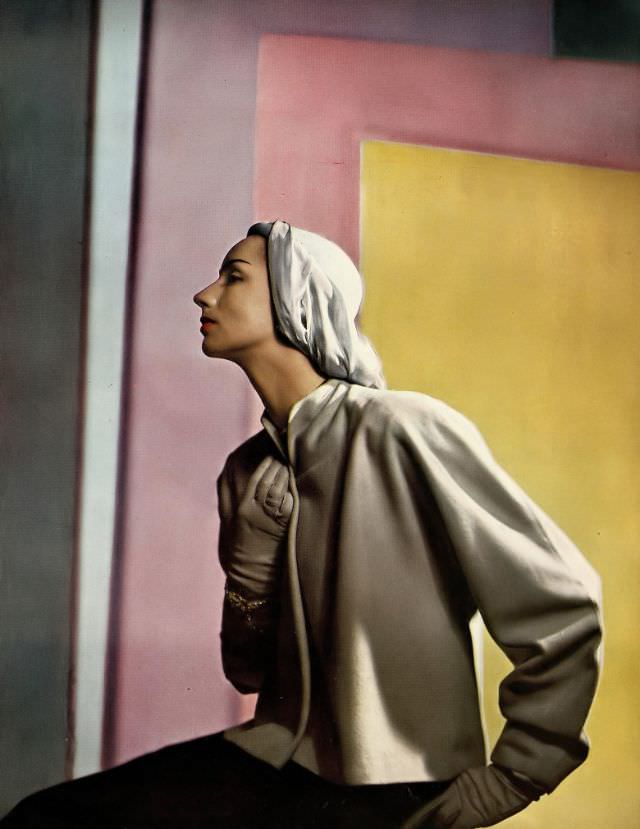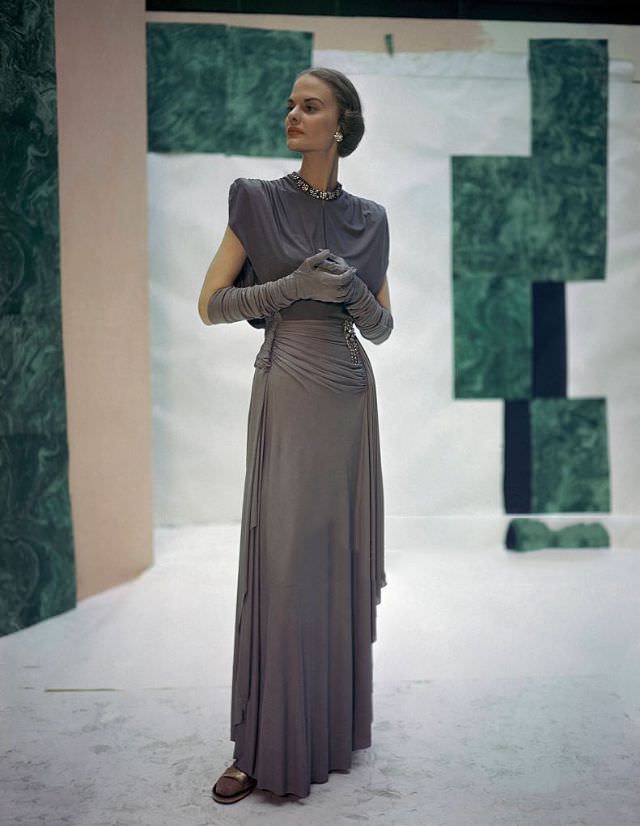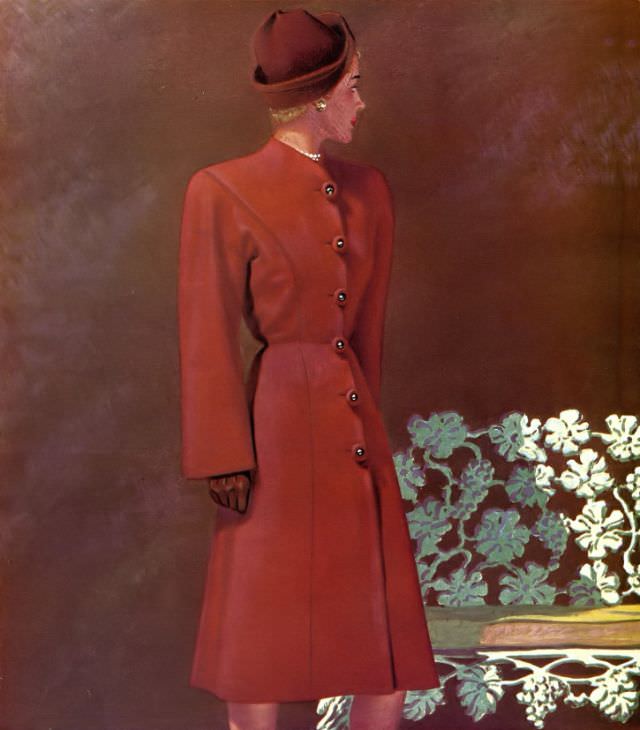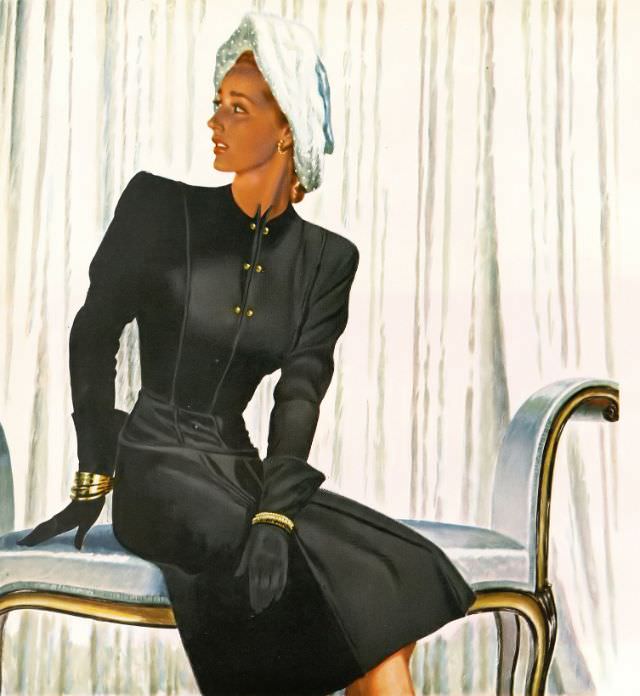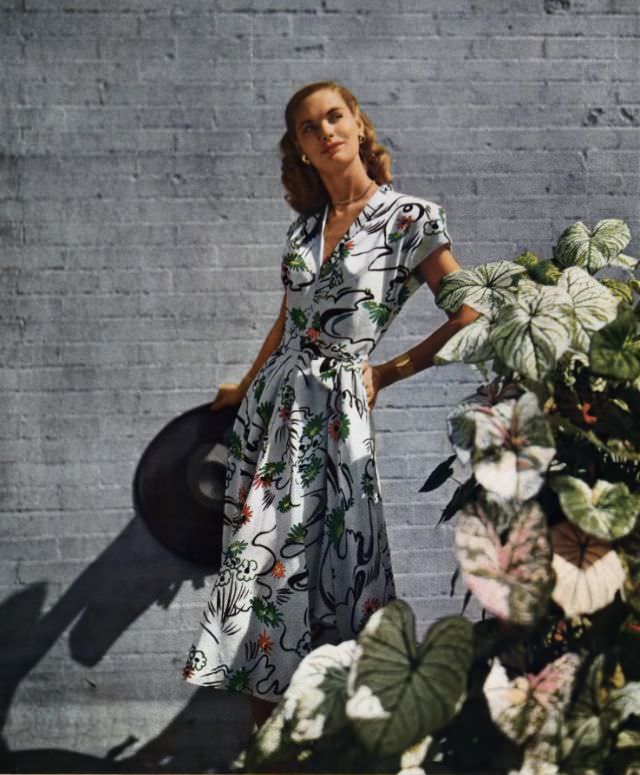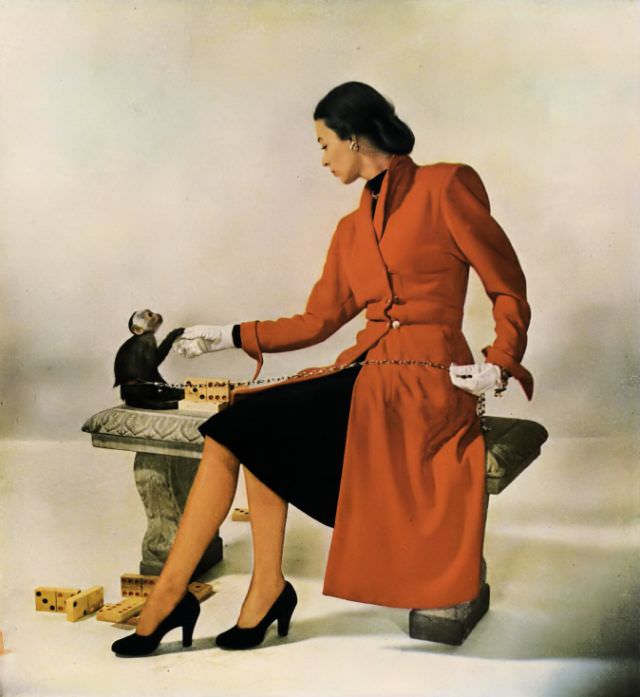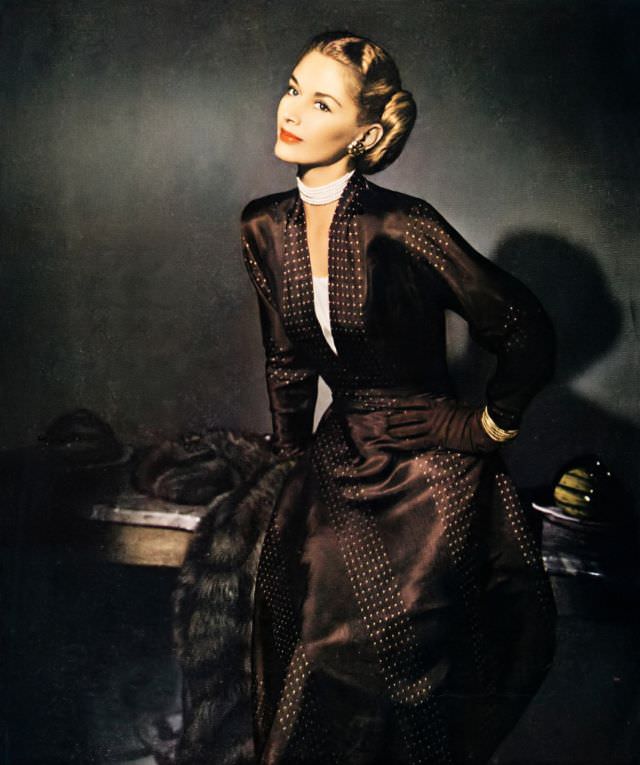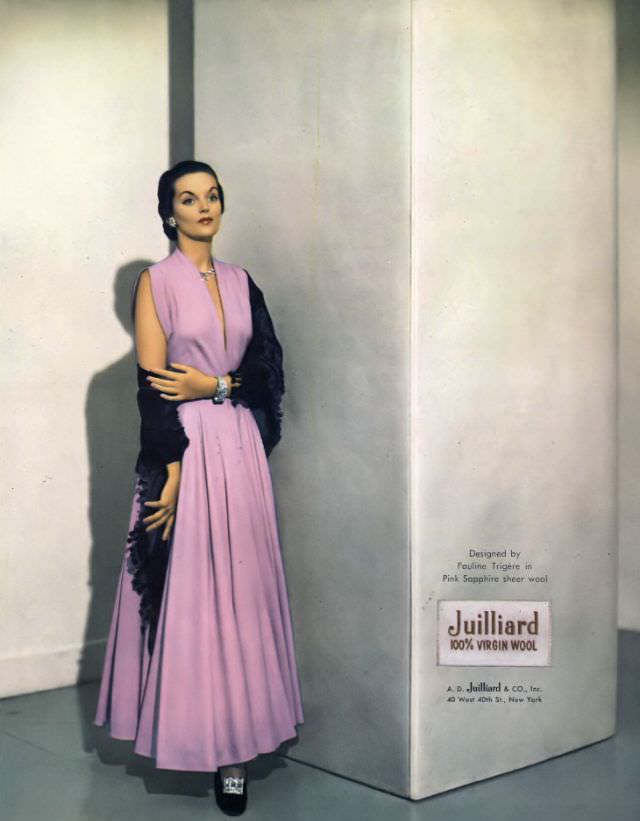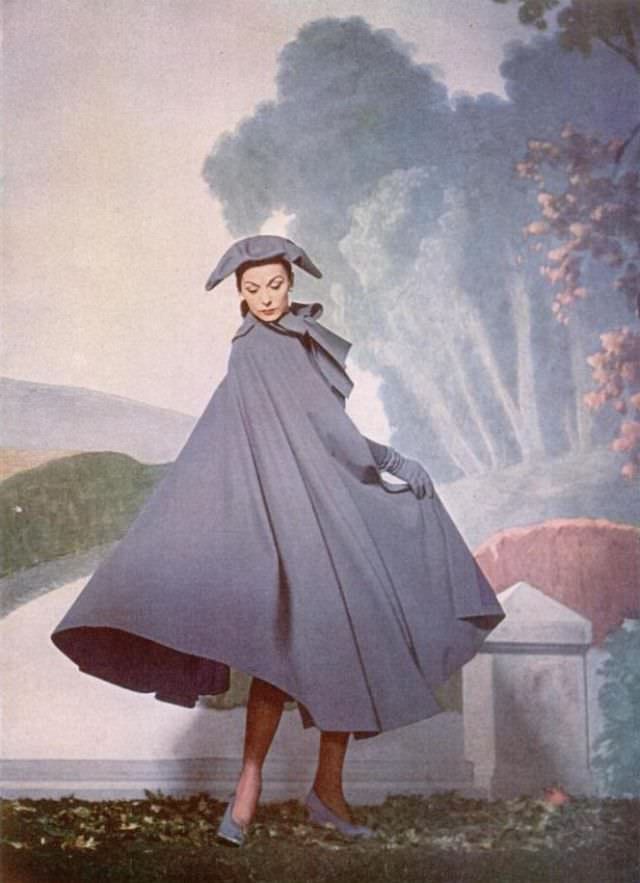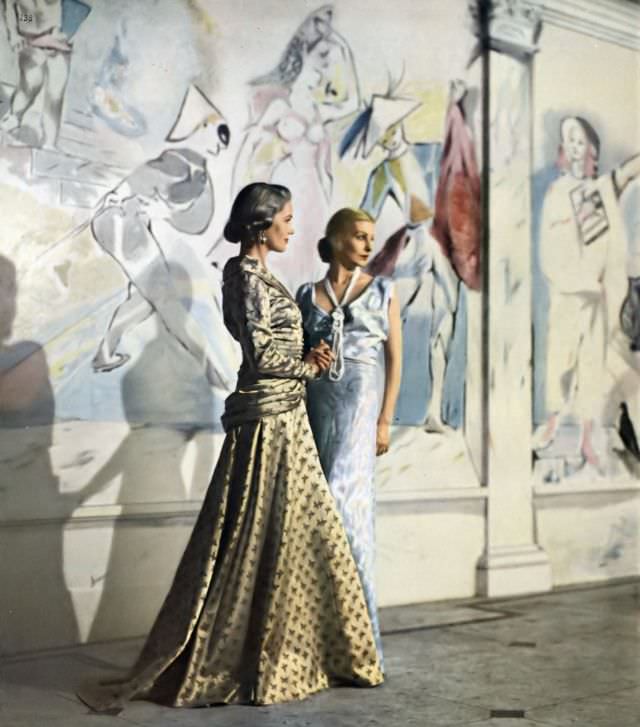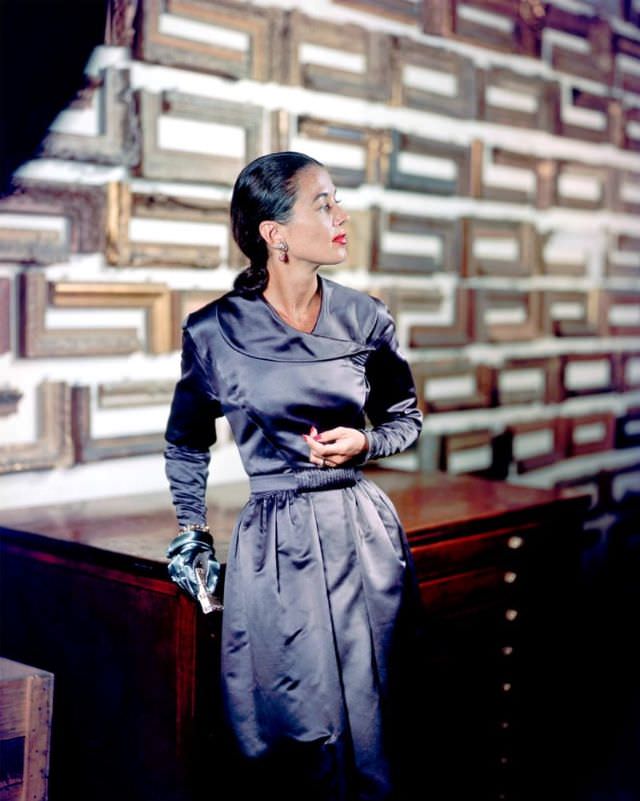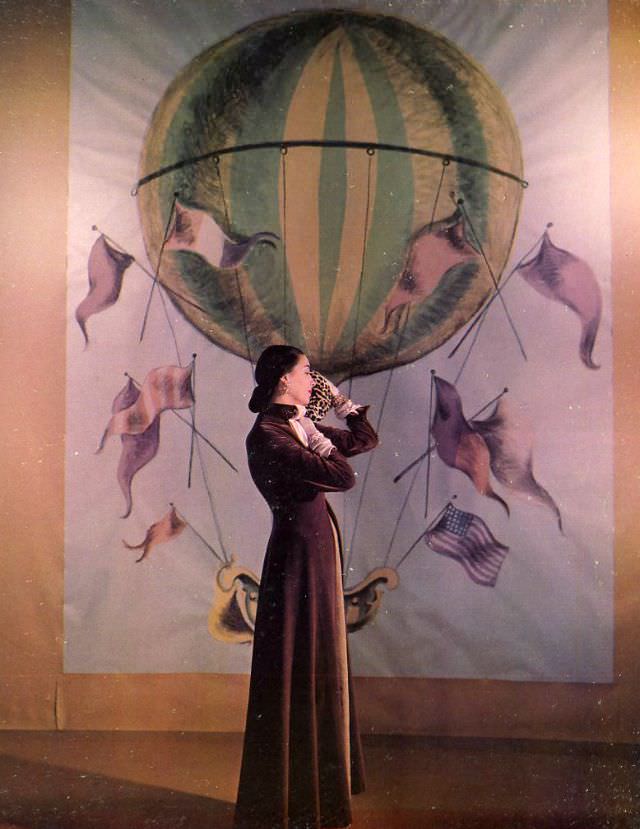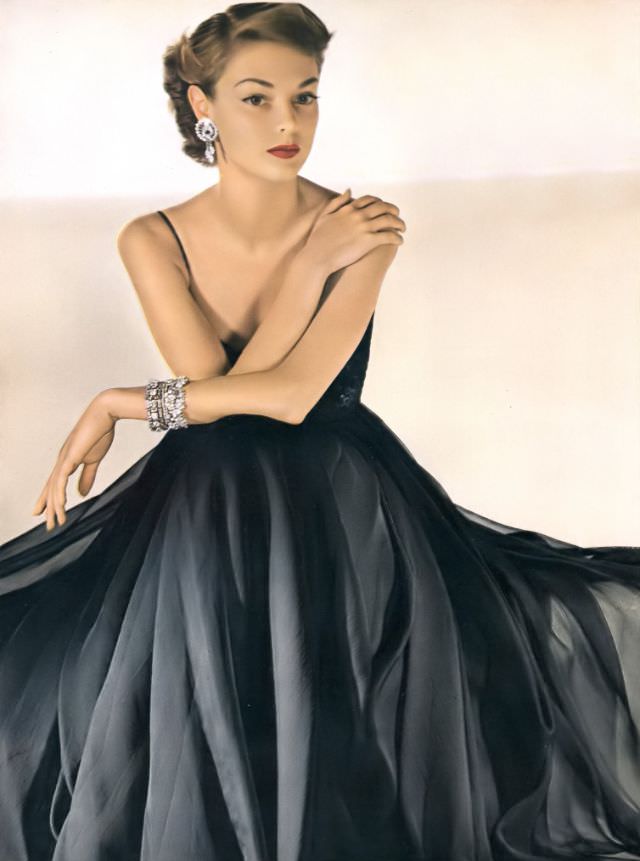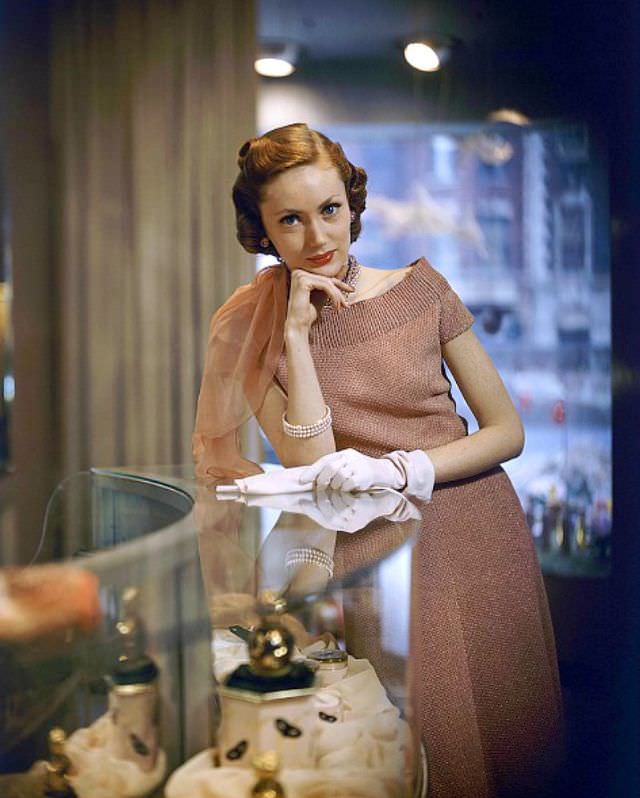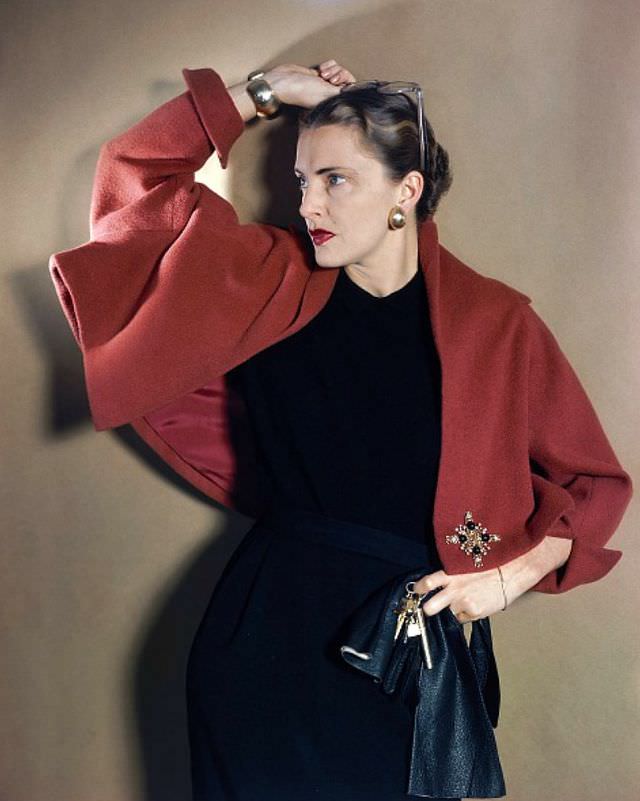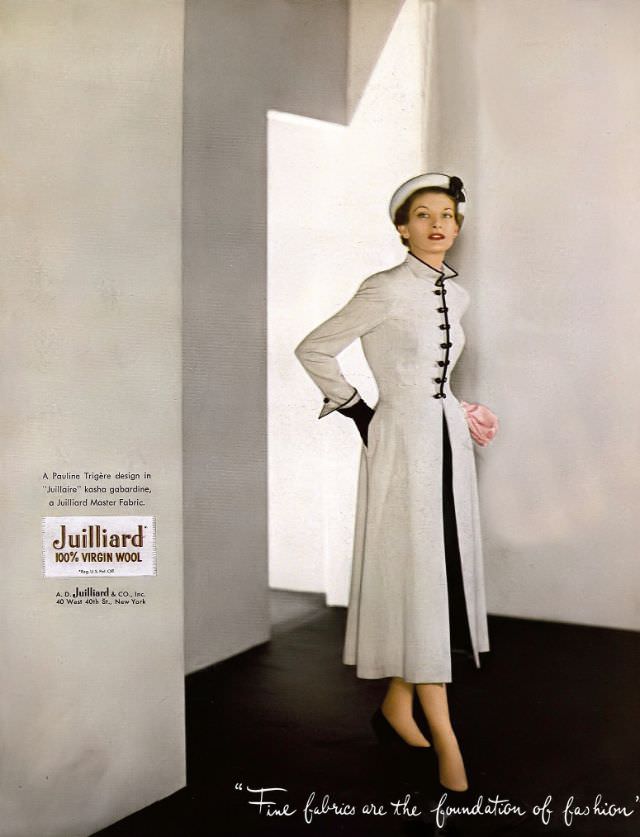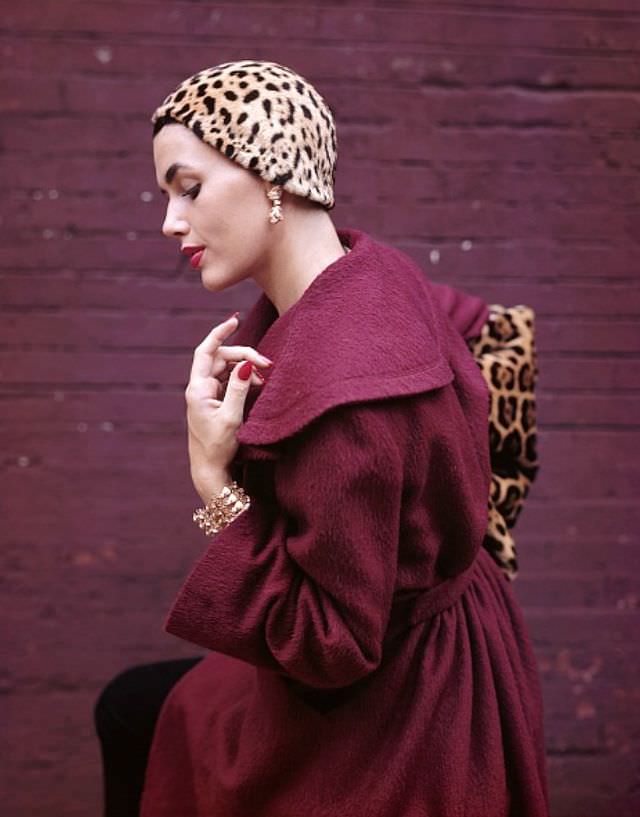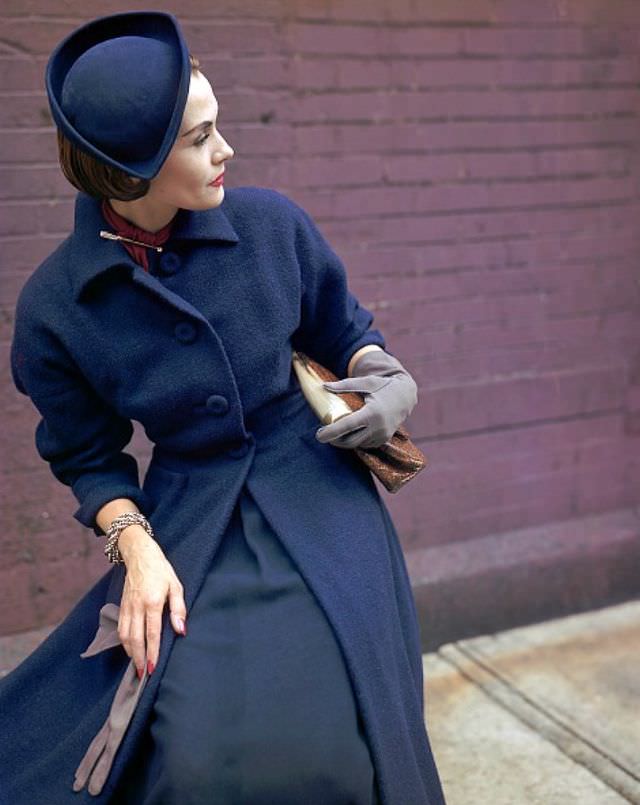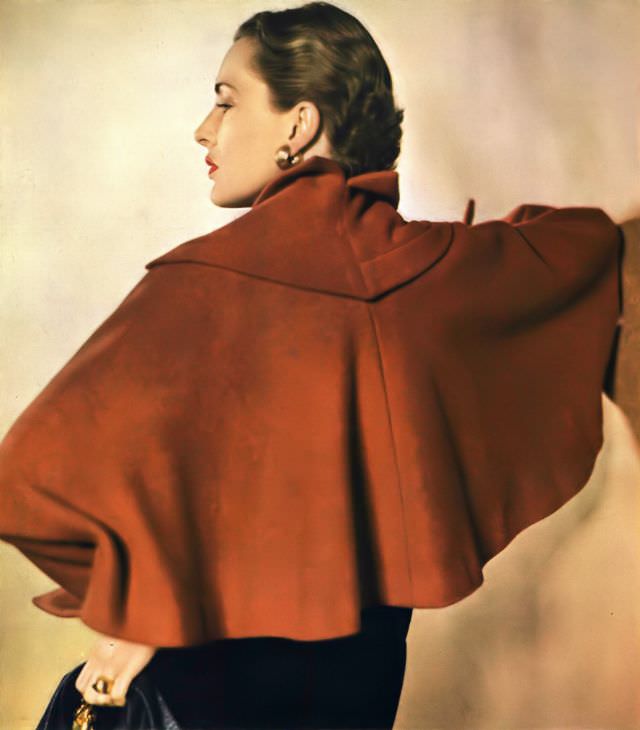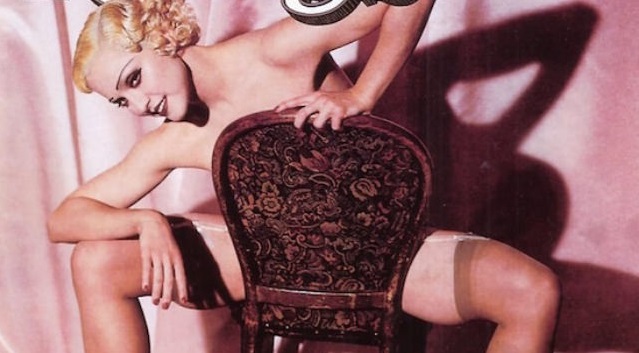Pauline Trigère, a Franco-American couturière, carved a unique niche in the fashion industry with her innovative and sophisticated designs. Although her styles reached the pinnacle of popularity in the 1950s and 1960s, her influence began in the 1940s. This era marked the beginning of Trigère’s journey as a fashion innovator, blending impeccable craftsmanship with a forward-thinking approach to women’s fashion.
Early Career and Transition to America
Trigère’s journey in fashion design began long before her recognition in the United States. Born in Paris in 1908, she was introduced to the world of fashion by her tailor father and dressmaker mother. The skills she acquired during her early years in Paris laid the foundation for her future success. Her move to New York in 1937, escaping the growing tensions in Europe, marked a significant transition in her career. It was in America that Trigère would establish her name as a distinctive and influential designer.
1940s Fashion Scene and Trigère’s Entrance
The 1940s fashion scene was dominated by the impact of World War II, which brought about a more utilitarian approach to clothing. Amidst this backdrop, Trigère introduced designs that were both functional and elegant, a contrast to the austere styles prevalent during the war. Her designs from this period showcased her ability to adapt to challenging times while maintaining a sense of luxury and femininity.
Innovations in Cut and Construction
Trigère’s work in the 1940s was recognized for its innovative approach to cut and construction. She was known for her precise tailoring and attention to detail, creating garments that were as beautifully crafted inside as they were outwardly stylish. This period saw her experimenting with structure and form, leading to designs that were both modern and timeless.
The Relevance of Function in Fashion
A key aspect of Trigère’s designs was her focus on functionality. She believed that women’s clothing should be both beautiful and practical. This philosophy was evident in her creations, which were designed to be versatile and wearable. Her designs were not just fashionable but also catered to the needs of modern women, who were becoming increasingly active in public and professional life.
Signature Styles and Iconic Pieces
During the 1940s, Trigère developed several signature styles that would become synonymous with her brand. This included the introduction of the jumpsuit, a revolutionary garment that combined style with practicality. She also experimented with outerwear, creating the sleeveless coat and the reversible cape – items that showcased her skill in combining form with function.


